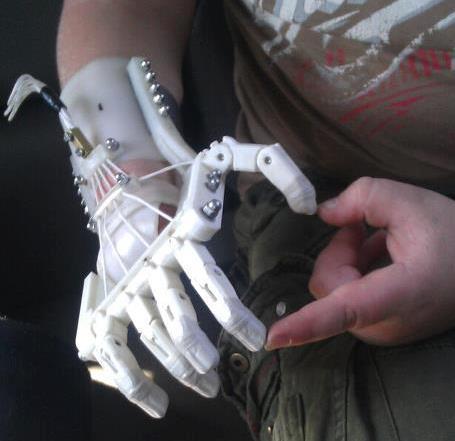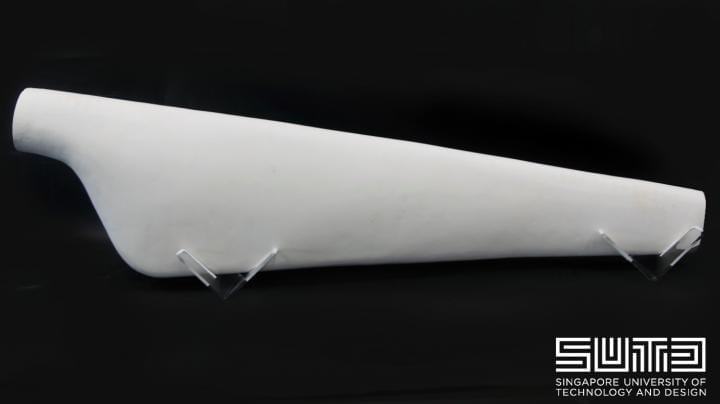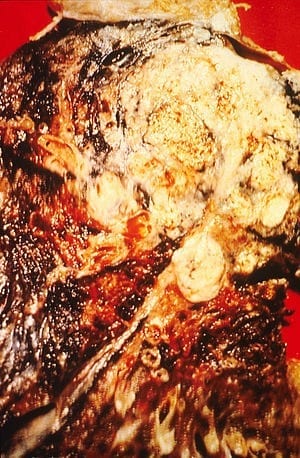
The device looks like a robot’s hand in a science fiction movie, costs about $500 to make and can be reproduced using plans on the Internet and a 3-D printer.
Richard Van As, a South African carpenter, lost four fingers from his right hand to a circular saw two years ago.
He was unable to afford the tens of thousands of dollars to get a myoelectric hand, which detects a muscle’s electric impulses to activate an artificial limb.
“After my accident, I was in pain, but wouldn’t take painkillers. I barely slept, and the more pain I had the more ideas I got,” he told The Associated Press. “Sometimes you have to chop fingers off to start thinking.”
He decided to build his own hand. After seeing a video posted online of a mechanical hand made for a costume in a theater production, he reached out to its designer, Ivan Owen, in Seattle.
Enter Robohand – a device that Van As and Owen invented that is made from cables, screws, 3-D printing and thermoplastic. It uses the rotation of a joint to enable five plastic digits to grasp. The device looks like a robot’s hand in a science fiction movie, costs about $500 to make and can be reproduced using plans on the Internet and a 3-D printer.
Van As is now on a mission to spread the mechanism to people without fingers or hands all over the world. The two gadget-lovers collaborated on developing a design for the device for a wide range of ages that could be used to grab objects, unlike most existing arm prostheses. Van As has fitted Robohands on about 170 people, from toddlers to adults, thanks to donations.
At first they used a milling machine, making Van As a metal robotic forefinger digit that helps him work in carpentry to this day. That’s when they perfected the shape for the robotic fingers.
“Ivan was a gift to me,” Van As said.
Then they turned to 3-D printing which creates the device in plastic. The 3-D printer gives much greater flexibility, allowing the device to be re-sized on the computer for each user and then manufactured through the printer. A glove-like covering is fitted in thermoplastic, and then fingers are created on the 3-D printer by melting and stacking plastic to make Lego-like digits which are connected to the glove with small cables and screws.
The team got a boost when two printers were donated by the Brooklyn-based Makerbot, one for use in Johannesburg and the other for Seattle.
“What was taking us two weeks to put together took us 20 hours,” Van As said. He opened drawers full of bolts, screws and leftover hinges from the beginning phases of the project. “Now it looks easy.”
They then started working on a design to help children with Amniotic Band Syndrome, a condition where children are born without appendages because their circulation is cut off in the womb by amniotic bands.
To spread the device as widely as possible, they made the Robohand an Open Source design available online, and Van As now collects donations to make hands for people around the world.
“I don’t want to make money out of misery,” Van As said, dismissing the idea that he could make a profit on the mechanical hand.
Robohands are different from other prostheses for three simple reasons: “functionality, simplicity and cost,” Van As said.
The Latest Bing News on:
3D printed robotic hand
- Machine learning and extended reality used to train welderson April 25, 2024 at 10:30 am
Ever since the ancient Egyptians hammered two pieces of gold together until they fused, the art of welding has continuously progressed.
- Rice University Students Develop Affordable Metal 3D Printer Prototype Using Cold-Spray Technologyon April 25, 2024 at 9:47 am
Students at Rice University have developed an incredibly inexpensive metal 3D printer prototype. Researchers at Virginia Tech have taken on a big challenge: making wind turbines sustainable.
- The world’s largest 3D printer is at a university in Maine. It just unveiled an even bigger oneon April 24, 2024 at 2:45 pm
The university that boasts the world’s largest 3D printer developed one even bigger. And it’s poised to help tackle one of America’s biggest problems of all.
- The Screw Bike Is a Bonkers Omnidirectional Self-Balancing E-Moto With 3D-Printed Wheelson April 23, 2024 at 2:13 pm
This unconventional-looking electric bike is the creation of James Bruton and can effortlessly move in any direction thanks to its Mecanum wheels ...
- MIT Technology Reviewon April 23, 2024 at 2:00 am
Emily Baker hopes her designs can make it cheaper and easier to build stuff in disaster zones or outer space.
- 'The 3D printing market in China is theoretically huge, but it is still catching up to 'North America & Europe' - Ryan Liuon April 22, 2024 at 1:43 am
Chinese manufacturers still have some catching up to do when it comes to the application on additive manufacturing, according to Ryan Liu.
- Where Fun Meets Functionalityon April 19, 2024 at 12:50 pm
At SCU, mechanical engineer Kira Hofelmann ’24 solves real-world robotic problems—and makes lightsabers in her spare time.
- 3D-Printed Molds Speed New Unilever Bottle Designs to Marketon April 19, 2024 at 12:20 pm
For Unilever, bottles that are stretch blow molded with a 3D printed tool are nearly indistinguishable from the final product produced through traditional metal tooling processes, and get product to ...
- Formlabs says new 3D printer ‘rivals injection molding’on April 17, 2024 at 6:01 am
This month marks five years since the release of the Form 3, Formlabs’ last major 3D printer refresh. To celebrate the occasion, the MIT spinoff has unveiled the long-awaited Form 4. At the top of the ...
- This Raspberry Pi Etch A Sketch bot will bring out your inner artiston April 16, 2024 at 8:21 am
Micah Tilton is using a Raspberry Pi to operate an Etch A Sketch using stepper motors and converting images into Etch A Sketch-friendly files.
The Latest Google Headlines on:
3D printed robotic hand
[google_news title=”” keyword=”3D printed robotic hand” num_posts=”10″ blurb_length=”0″ show_thumb=”left”]
The Latest Bing News on:
Robohands
- Despite widespread support for clemency, Missouri will execute death row inmateon April 9, 2024 at 2:09 am
Missouri plans to execute a man tonight who shot and killed two of his family members nearly 20 years ago. That's despite an unusual coalition advocating against his execution. A MARTÍNEZ, HOST ...
- Despite widespread support for clemency, Missouri will execute death row inmateon April 9, 2024 at 2:09 am
Missouri's governor has denied clemency for Brian Dorsey, who is scheduled to be executed Tuesday night. The decision comes as dozens, including prison workers, call for his life to be saved.
The Latest Google Headlines on:
Robohands
[google_news title=”” keyword=”Robohands” num_posts=”10″ blurb_length=”0″ show_thumb=”left”]










